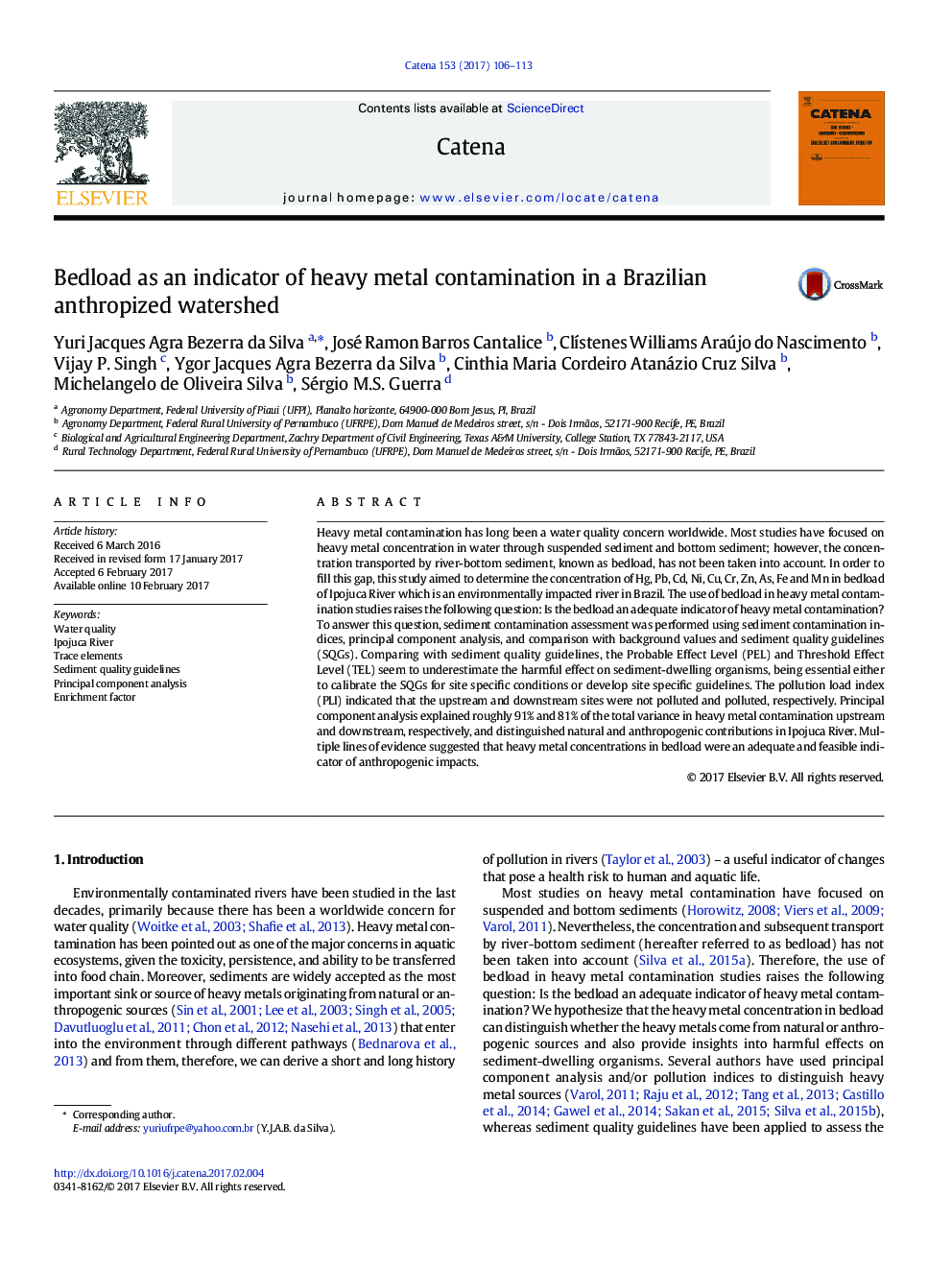| کد مقاله | کد نشریه | سال انتشار | مقاله انگلیسی | نسخه تمام متن |
|---|---|---|---|---|
| 5770155 | 1629201 | 2017 | 8 صفحه PDF | دانلود رایگان |

- Heavy metal contamination has been a water quality concern worldwide.
- Metal concentrations were determined in bedload of an environmentally impacted river.
- Zn, Ni, Cu, and As in the downstream cross section represent a major concern.
- Metal concentrations in bedload were clearly an adequate indicator of contamination.
Heavy metal contamination has long been a water quality concern worldwide. Most studies have focused on heavy metal concentration in water through suspended sediment and bottom sediment; however, the concentration transported by river-bottom sediment, known as bedload, has not been taken into account. In order to fill this gap, this study aimed to determine the concentration of Hg, Pb, Cd, Ni, Cu, Cr, Zn, As, Fe and Mn in bedload of Ipojuca River which is an environmentally impacted river in Brazil. The use of bedload in heavy metal contamination studies raises the following question: Is the bedload an adequate indicator of heavy metal contamination? To answer this question, sediment contamination assessment was performed using sediment contamination indices, principal component analysis, and comparison with background values and sediment quality guidelines (SQGs). Comparing with sediment quality guidelines, the Probable Effect Level (PEL) and Threshold Effect Level (TEL) seem to underestimate the harmful effect on sediment-dwelling organisms, being essential either to calibrate the SQGs for site specific conditions or develop site specific guidelines. The pollution load index (PLI) indicated that the upstream and downstream sites were not polluted and polluted, respectively. Principal component analysis explained roughly 91% and 81% of the total variance in heavy metal contamination upstream and downstream, respectively, and distinguished natural and anthropogenic contributions in Ipojuca River. Multiple lines of evidence suggested that heavy metal concentrations in bedload were an adequate and feasible indicator of anthropogenic impacts.
Journal: CATENA - Volume 153, June 2017, Pages 106-113